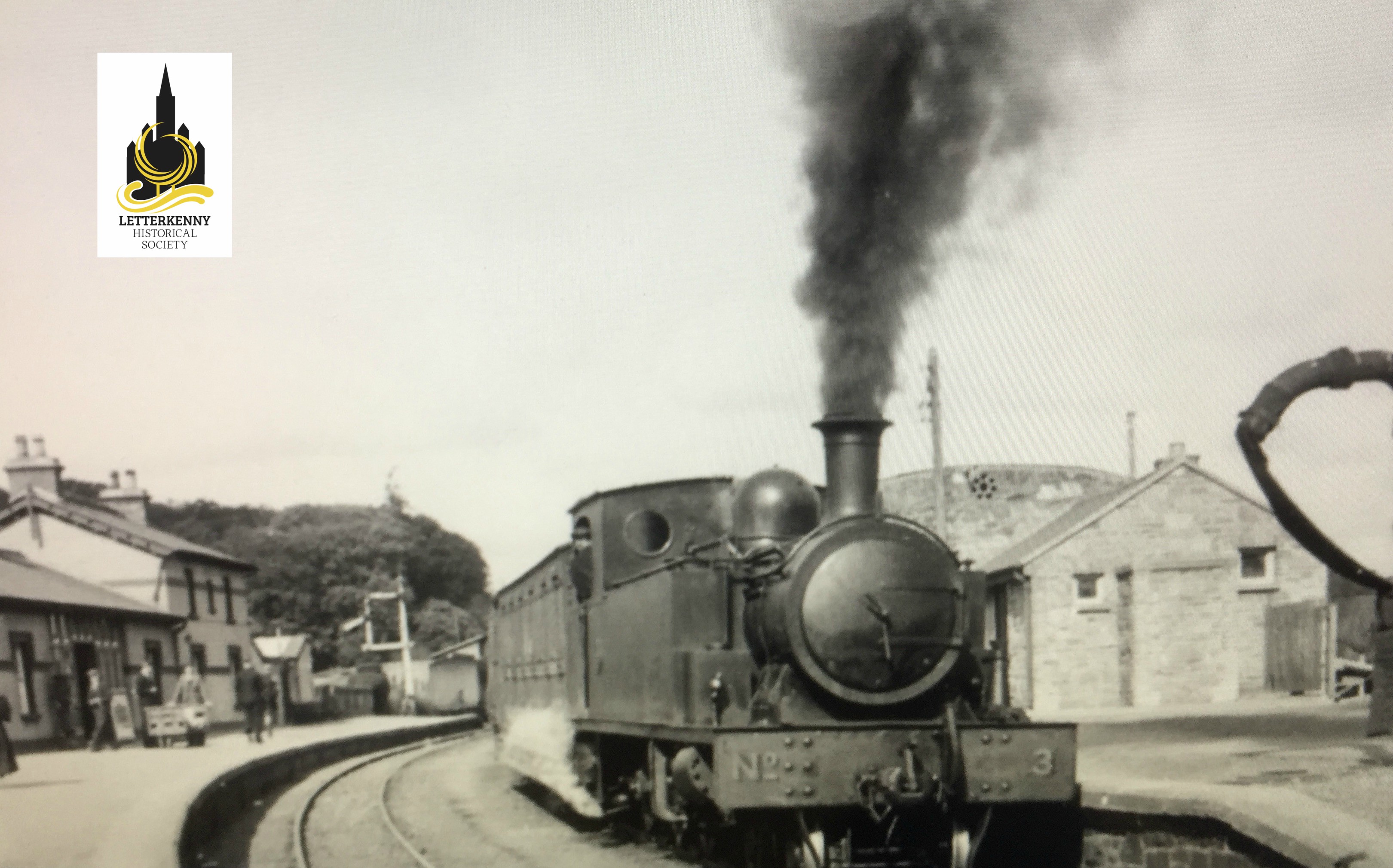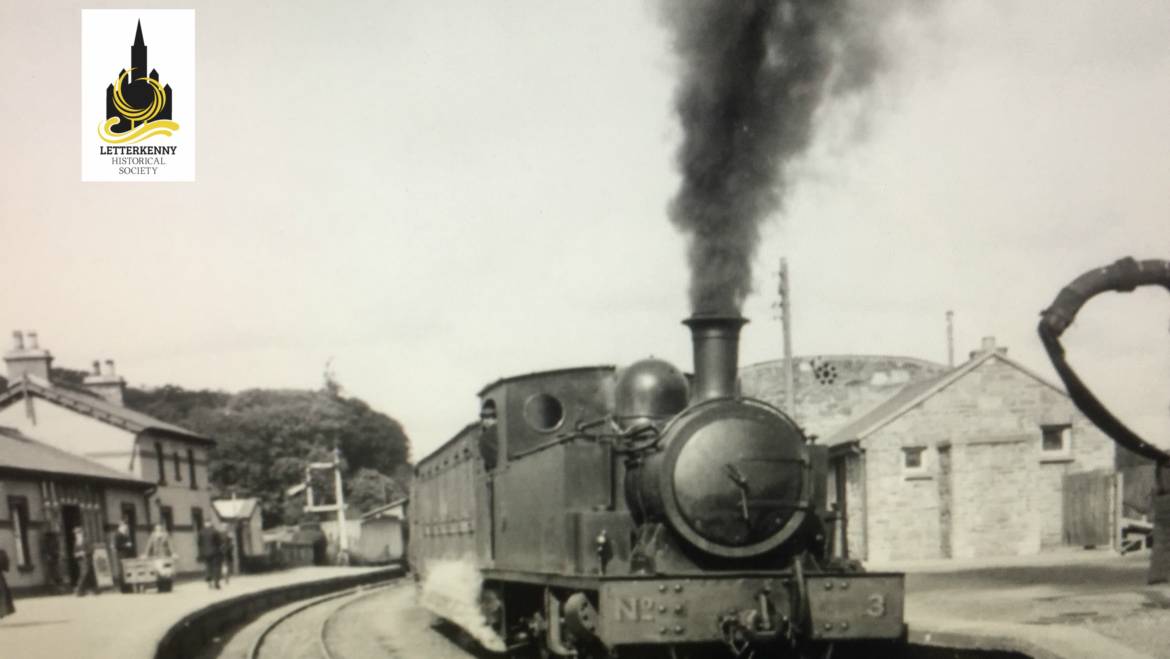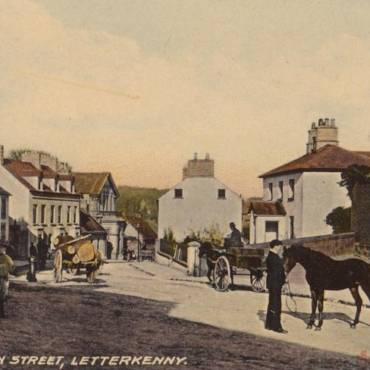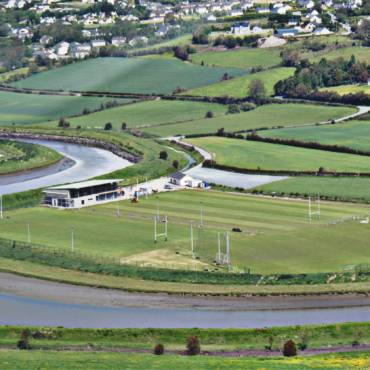The Railways
Having looked at the importance of Ballyraine Port in our last post, another key factor in the economic growth of Letterkenny in the early twentieth century was the construction of a railway system that connected the town to Derry in the east and later Burtonport to the west and also to the towns in the south of Donegal. There were two railway companies that ran the lines in Donegal, the County Donegal Railway (CDR) and the Londonderry and Lough Swilly Railway (L&LSR). The CDR controlled the lines in the south of the county while the L&LSR exclusively ran the lines in the north and northwest. Situated between both regions, Letterkenny then was the only town in the county that housed both rival networks.
Since the mid 1850s, several projects had been mooted to bring the town into the existing railway network coming from Derry. This led to the incorporation of the Letterkenny Railway Company in 1860 and after nearly twenty years of discussion and delays, in 1883 the Letterkenny Railway Company’s narrow-gauge line from Tooban Junction was finally opened as an extension of the Londonderry and Buncrana Railway. This line was the property of the L&LSR and they had their station at the entrance to the town at the junction of the Port Road and the Ramelton Road. By 1903, a further extension was built that connected the town to Burtonport through Kilmacrennan, Dunfanaghy and Gweedore and a new Station House and stop was built at Oldtown with the track running alongside the Isles. By 1903, through their connection via the railway, the markets of Derry and Letterkenny now had access to the fisheries of Burtonport by an efficient rail service that was much quicker than the traditionally used method of horse and cart. Large viaducts and bridges were built for this Burtonport extension through a mountainous and boggy terrain, most notably over the Owencarrow River, and fish, potatoes, livestock, turf and mail could now be delivered quickly to and from Letterkenny from these surrounding stations.
In 1892 the Finn Valley and West Donegal Railways were amalgamated and became known as the Donegal Railway, changing its name to County Donegal Railway in 1906. An extension of the line from Strabane to Letterkenny through Raphoe and Convoy was opened in January 1909, most likely to gain access to the thriving fish industry that was passing through the town from Burtonport. From Strabane, you could then travel to Glenties in the west of Donegal or switch at Stranorlar and head south to Donegal Town, Killybegs and Ballyshannon. The CDR had their Station House immediately next door and at a right angle to the L&LSR Station House at the Port Road/Ramelton Road junction and both of these rival companies ran side by side in the town for almost 50 years.
After the Second World War, traffic on both railway networks began to fall off, a consequence of the competition from road transport. Cars and lorries had become much more popular and people could now access the outlying towns and villages much easier and quicker than using the railway system.
The Derry-Letterkenny line of the L&LSR closed on 1st July 1953, running only a goods service since 1940. It was followed seven years later by the closure of the Burtonport extension. Various lines and stations of the CDR throughout the county were by now in need of immediate repair and as the parent companies could not provide the necessary capital for replacement, a formal application for complete closure of the CDR system was made in May 1959 and all services ceased on 31st December 1959. The railways in Donegal never lived to see the coming of the 1960s. As the last trains left the Letterkenny stations, mini explosives detonated the railway lines and they were lifted shortly thereafter. The last Station Masters in Letterkenny were Rory Delap (L&LSR and grandfather to the Premiership footballer of the same name) and Matt Patterson (CDR and father of the successful singing group The Pattersons). The CDR survived as a separate transport company until it was eventually absorbed by Coras Iompor Éireann (CIÉ) in 1971, while the Lough Swilly Bus Company took over the duties of the L&LSR.
The legacy of the train system can still be seen around Letterkenny. The former CDR station is now the Bus Éireann depot (successor to CIÉ) while a reconstruction of the Dry Arch bridge at Bonagee with its tin men building the lines can be seen as you enter the town from Derry/Dublin. Remnants of the actual bridges can be seen at Owencarrow, Oldtown and Newmills while the Oldtown Station House was demolished and rebuilt as a large hotel, fittingly called the Station House Hotel. The section of the line that connected Letterkenny and Oldtown stations along the area known as the Isles became a road for the cars, buses and lorry systems that replaced the trains and although it may be officially called Pearse Road, to many Letterkenny residents, it will always be known as the ‘Railway Road’.




